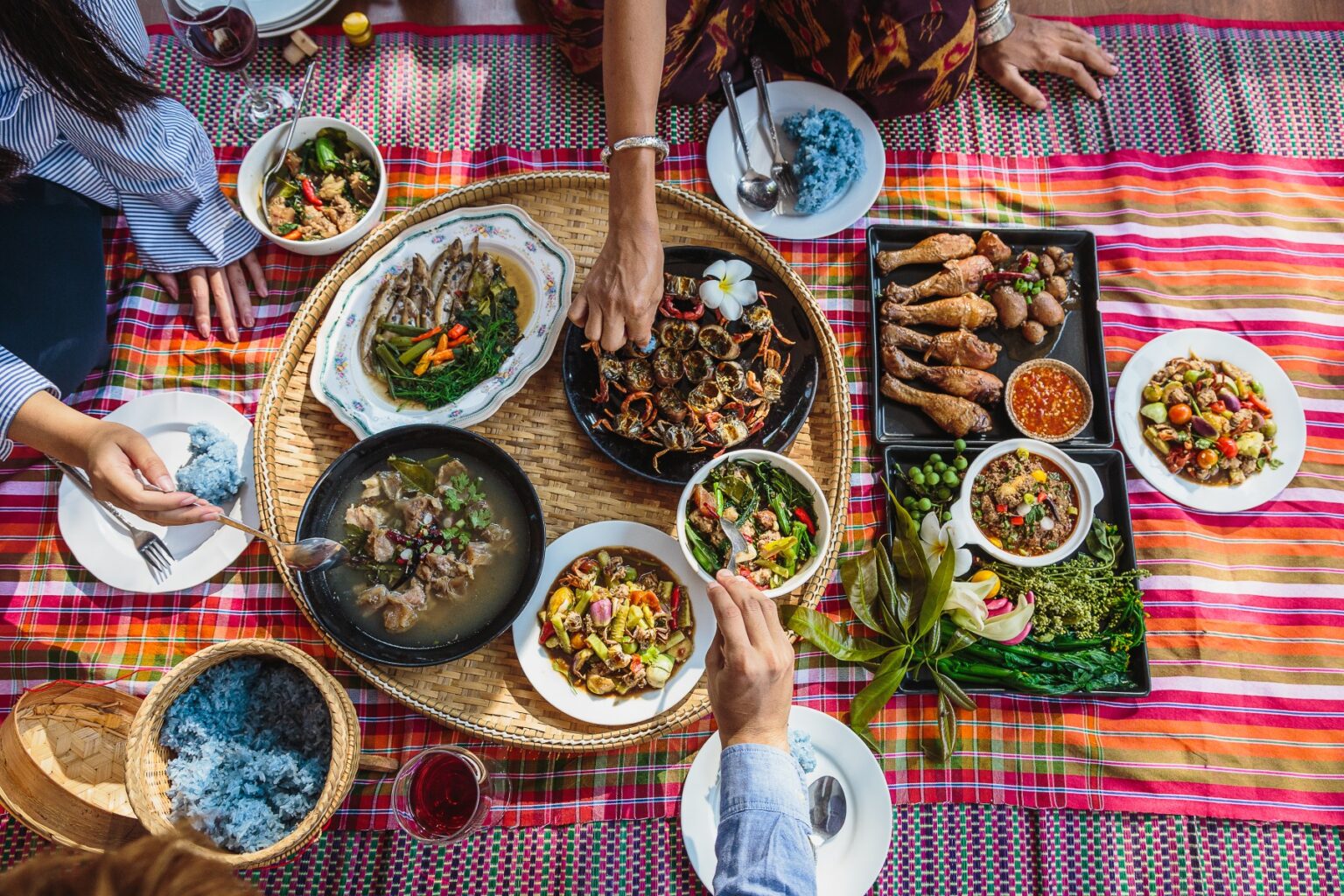Among Asia’s rich and varied cuisine, Thai food stands out for its decadent flavors and vibrant herbs and spices. The main flavors in Thai food are spicy, sour, salty, sweet, and bitter. New arrivals in Thailand will find local dishes surprisingly complex, with influences from the likes of Persia, India, China, and Malaysia.
Thai cuisine also comes in various forms, from the refined Royal Thai cuisine to the more approachable street food. As such, savoring local food is a great way for expats to engage with the country’s people and culture.
To get snacking, here are 10 of the most popular local dishes, as well as some recipes to try at home:
Pad Thai
Amidst the chaos of World War II, Thailand was determined to protect its independence while addressing a major rice shortage. Rather than impose rations, former Prime Minister Plaek Phibunsongkhram decided to boost nationalist sentiment with a campaign titled “Noodle is Your Lunch.” This was focused on a new national dish: pad Thai (ผัดไทย), i.e., Thai-style stir-fried noodles.
Inspired by the noodle-rich meals introduced by Chinese immigrants, pad Thai is now synonymous with Thai cuisine.
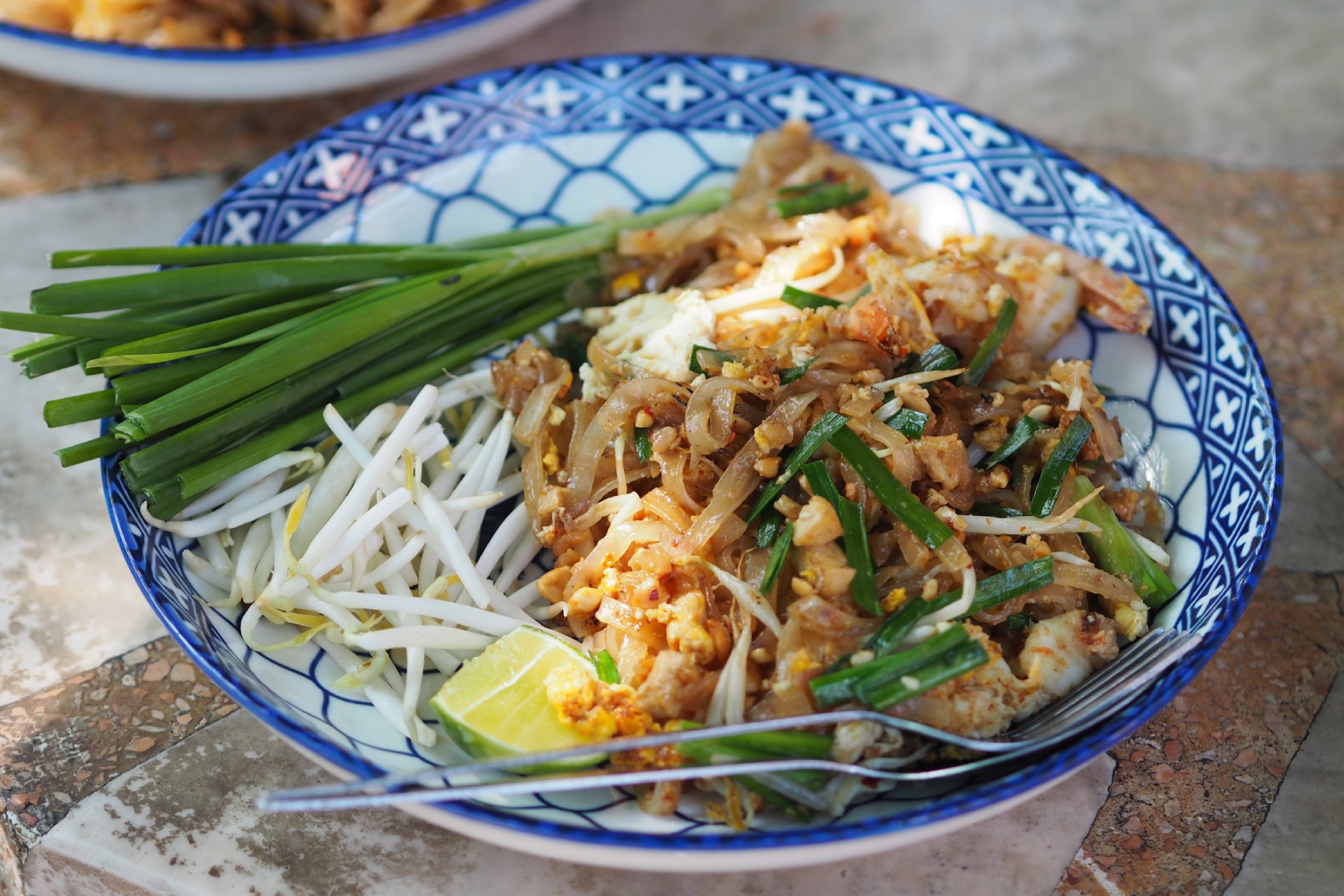
Bursting with flavors and textures, this meal is popular with both local street stalls and Michelin-star eateries.
The dish features rice noodles stir-fried with dried or fresh prawns (or sometimes chicken, pork, or tofu). It also has additional bean sprouts, eggs, and shallots. For a finishing touch, sprinkle some crushed peanuts, herbs, and lastly, chili and lime juice on the top.
Make Your Own
- Keep this easy-to-follow recipe handy
- Whip up a plate in record time with this speedy video tutorial
- Try this authentic recipe
Tom yam goong
Native to Thailand’s central region, tom yam goong (ต้มยำกุ้ง), i.e., spicy, sour shrimp soup, is arguably the country’s most iconic soup. Delightfully spicy and sour, this dish packs a punch of flavor with fragrant lemongrass, kaffir lime leaves, shallots, lime juice, galangal, fish sauce, and red chili peppers. It also provides a meaty texture in the form of mushrooms and juicy prawns.

While some variations include chicken, fish, or other seafood, few hold up to the fresh, rich, and exotic broth of the original. This is especially true since the dish’s name derives from the inclusion of going (กุ้ง), meaning prawns.
Make Your Own
- Hang this decadent recipe in the kitchen
- Keep it simple with this easy-to-follow guide
Khao soi
It’s not entirely clear how this rich and sumptuous creamy noodle soup came to be a standard bearer for Thai food. However, it has certainly become one of the country’s most beloved dishes.
Experts believe that khao soi (เข้าซอย, literally meaning “enter side street”) has roots in China’s Yunnan province. In the 18th century, Chinese Muslims from this region created a trade route through historical Burma into Northern Thailand, bringing with them a rice noodle soup that was the precursor to today’s khao soi.
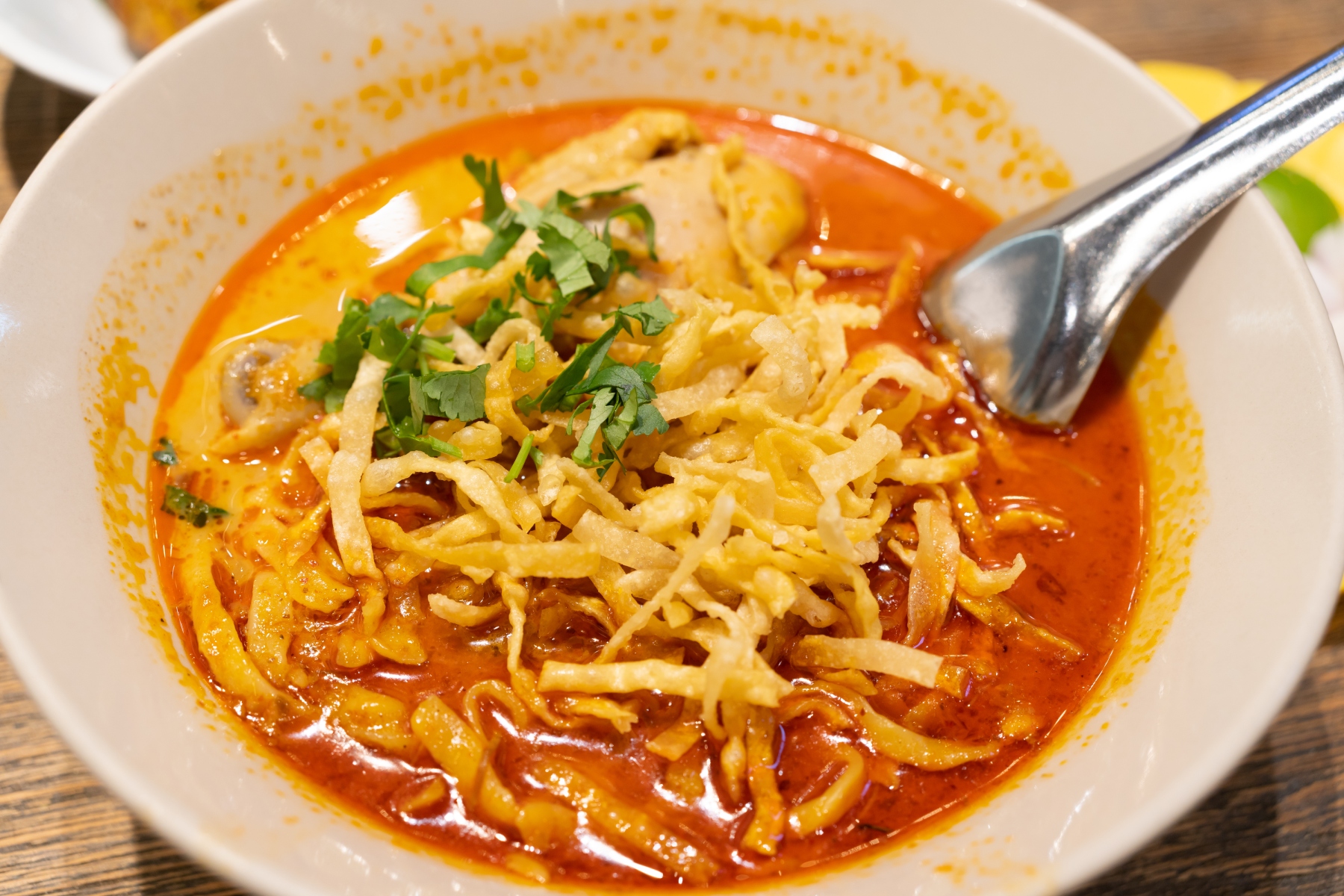
With the substitution of rice for noodles and the addition of curry paste and coconut milk, this is now a signature local dish. Mild but rich in flavor and fragrance, the broth boasts a creamy base, soft noodles, and a protein – usually chicken, beef, or tofu. It is finished off with a decadent topping of crispy fried egg noodles, pickles, and shallots.
Make Your Own
- Try this foolproof recipe
- Get creative with this choose-your-own-adventure version
Pad ga prao moo
A full meal on one plate, pad ka prao moo (ผัดกะเพราหมู่), i.e., stir-fried Thai basil with pork, is a scrumptious union of rice and pork with hot basil (also known as holy basil). Available at both street vendors and high-end restaurants, this deceptively simple but delicious meal is a regular indulgence for lunch and dinner among locals.
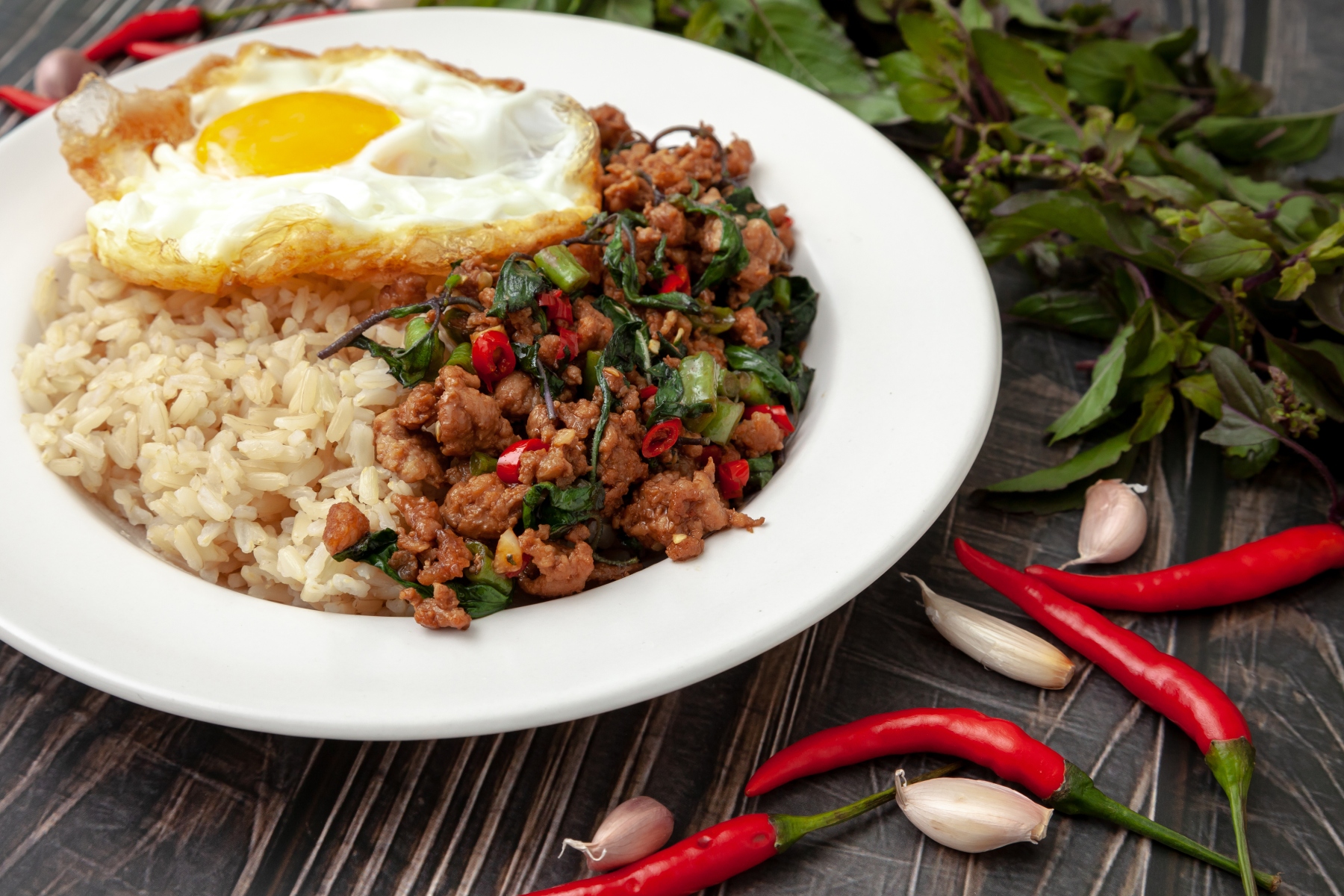
The minced pork is first stir-fried with fresh chilis, shallots, garlic, fish sauce, green beans, a hint of palm sugar, and a dash of holy basil leaves. A heaping portion of this spicy meat is then paired with steamed white jasmine rice and a fried egg.
Although the dish is traditionally made with pork, you can substitute it with chicken, beef, seafood, duck, or tofu to meet your dietary requirements.
Make Your Own:
- Keep things easy with this visual guide
- Follow this quick video recipe
Khao pad sapparod (pineapple fried rice)
Given that rice is a staple in Thailand, it should come as no surprise that fried rice holds a special place in local cuisine. A classic khao pad (ข้าวผัด) is certainly something to try during your first days in the country. However, there’s something special about the visually impressive and equally tasty khao pad sapparod (ข้าวผัดสัปปะรด).

Start with Thai jasmine rice (preferably yesterday’s batch), then fry it with garlic, onions, prawns, fresh pineapple pieces, and other vegetables. Next, add shrimp paste, oyster sauce, and fish sauce for that rich umami flavor.
The real wow factor comes from presenting the rice in a hollowed-out pineapple. And don’t forget to top it all off with fresh herbs for a pop of color.
Make Your Own
- Put together this simple, appetizing version
- Ace this authentic video recipe
Gaeng massaman gai
The rich tapestry of Thai food includes many flavors of curries. When immersing yourself in the culture by trying popular varieties like red or yellow curries, do not overlook this sumptuous chicken massaman curry (แกงมัสมั่นไก่).
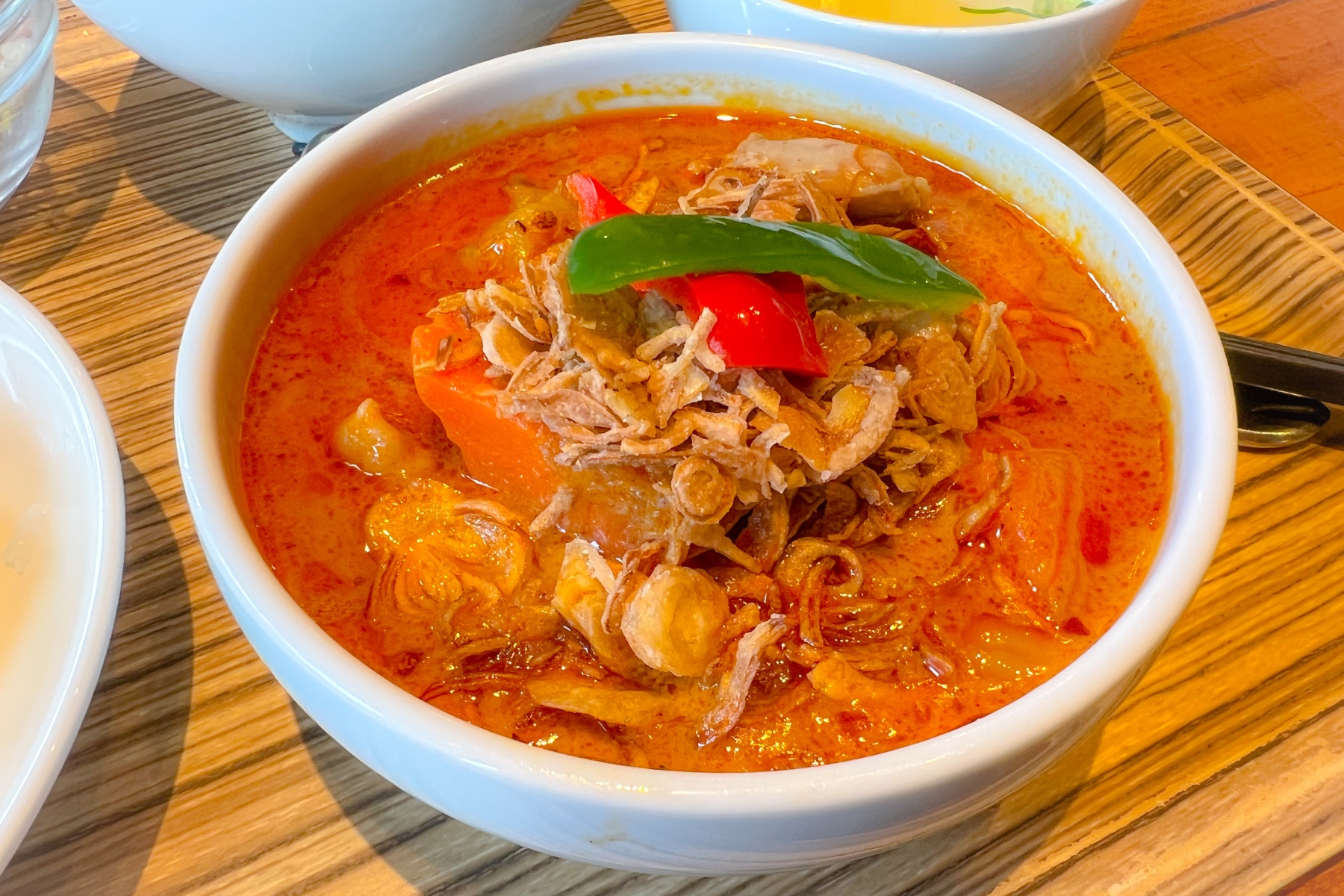
Experts believe that the massaman chicken curry originated in the 17th century when traders from the Middle East and India brought indigenous ingredients and spices to Southern Thailand.
The result is a mellow yellow curry that pairs ingredients such as mace, nutmeg, cloves, cassia, and bay leaves with more traditional Thai products like lemongrass, galangal, and kaffir lime peel. The star ingredient in the dish is the chicken, which is paired with cubed potatoes and roasted peanuts.
Make Your Own
- Impress with this authentic version
- Get creative with this alternative recipe featuring beef
Pad see ew
While noodles may not be as popular as rice in Thailand, there are a few standout dishes that are staples of the Thai food scene. One of these is pad see ew (ผัดซีอิ๊ว), wok-fried noodles with soy sauce that was developed by Chinese immigrants in Thailand in the 1930s.

Pad see ew has hints of salt and caramel, thanks to the addition of oyster and soy sauces. The soft, flat noodles are first fried in a wok with copious amounts of garlic and onion. Then after adding egg and seasonal vegetables, the dish is finished off with chicken or pork. The result is a hearty, comforting meal that hits the spot at breakfast or any other time of day.
Make Your Own
- Make no mistakes with this detailed guide
- Stay classic with this authentic recipe
Kai jeow
Simple but appetizing, this Thai-style omelet (ไข่เจียว) is a beloved Thai street food that’s a culinary delight. This crispy, burrito-like omelet, typically with crab, pork, or shrimp, is a popular choice for breakfast.
The fluffy omelet comes with a heap of rice and a side of chili ketchup to enhance the flavor. If you want to add to your five-a-day, you can also throw in some vegetables.

You can try kai jeow just about anywhere in Thailand, but the ultimate version with crab is available at Jay Fai. A Michelin-starred street stall in Chinatown, Bangkok, go early and expect to queue before you sink your teeth into this succulent specialty.
Make Your Own
- Try this three-step recipe
- Whip up this pork variation
Gai yang
Nothing beats a classic meal like Thai-style grilled chicken (ไก่ย่าง), which is the Thai take on grilled chicken. Originating from the Laotian diaspora in Northeastern Thailand, this poultry dish marinates in a blend of fish sauce, plenty of garlic, and a herby coriander root before grilling for several hours. The result is juicy meat covered in a decadent, slightly sweet layer of skin.

For the best results, pair the chicken with local dipping sauces, like jaew (แจ่ว), a mix of lime, dried chili, and fish sauce, a side of the piquant, local papaya salad (ส้มตำ), or a local beer.
Make Your Own
- Keep this moreish recipe handy for easy meals
- Follow this foolproof video
Khao niao mamuang
Few dishes are as evocative of Thai food as mango and sticky rice (ข้าวเหนียวมะม่วง), the popular local dessert of sweet yellow mango and sticky rice. While there is no clear consensus on how this treat was derived, the earliest mentions date to the late Ayutthaya era between the 14th and 18th centuries.
What is clear now, however, is that it has become the quintessential Thai dessert and is available almost anywhere in the country.
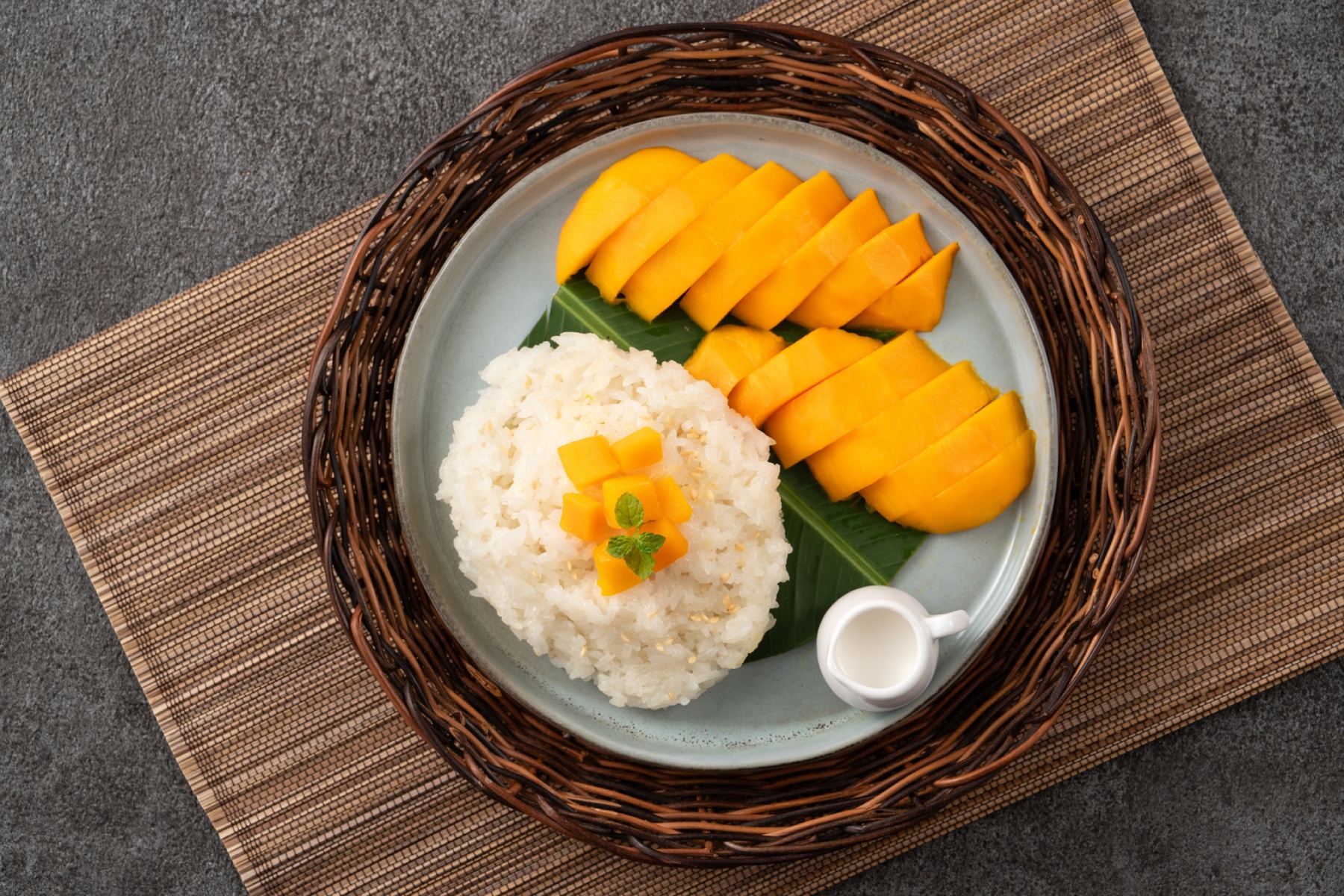
Making khao niao mamuang is quite simple. First, slice up a fresh mango, then place the slices over a bed of sticky rice, and finally, douse the whole dish in rich coconut cream with a hint of salt (and perhaps a few pine nuts, too). And there you have it: a crowd-pleasing dish that is simply irresistible.
Make Your Own:
- Indulge in this gluten-free version
- Try this easy recipe
